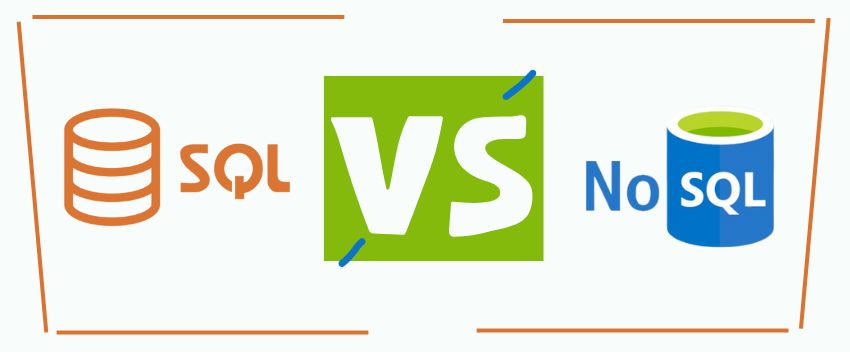
Jully 18, 2022
Difference between an SQL DB and a NoSQL DB
Explore the key differences between SQL and NoSQL databases and learn which type of database is best for different use cases.
SQL is a decades-old method for accessing relational databases, and most people who work with databases are familiar with it.
And we’ve seen different database technologies become available that are better suited to new use cases. These databases are commonly called NoSQL.
What is an SQL database?
SQL, which stands for “Structured Query Language,” is a programming language that has been widely used since the 1970s to manage data in relational database management systems (RDBMS). In the early years, when storage was expensive, SQL databases focused on minimizing data duplication.
Fast-forward to today, and SQL is still widely used for relational database queries, where data is stored in rows and tables linked in various ways. A table record can link to one or many others, or many table records can relate to many records in other tables. These relational databases, which offer fast data storage and retrieval, can handle large volumes of data and complex SQL queries.
What is a NoSQL database?
NoSQL is a non-relational database, meaning that it allows more flexibility to use a structure that best fits the data and a different structure than a SQL database (no rows and columns). The term “NoSQL” wasn’t coined in the early 2000s. This does not mean that the systems do not use SQL, because NoSQL databases sometimes support some SQL commands. More accurately, “NoSQL” is sometimes defined as “not just SQL.”
Difference between an SQL DB and a NoSQL DB
When to use SQL
SQL is a better choice when working with relational data. Relational databases are efficient, flexible, and easily accessible by any application. One of the advantages of a relational database is that when a user updates a particular record, each instance of the database is automatically refreshed and that information is delivered in real time.
SQL and a relational database make it easy to manage large amounts of data, scale as needed and allow flexible access to data — for example updating data only once rather than changing multiple files. It is also best for data integrity assessment. Since each piece of information is stored in a single place, there is no problem with previous versions confusing the image.
Most of the big tech companies, including Uber, Netflix, and Airbnb, use SQL. Even large companies such as Google, Facebook, and Amazon, which build their own database systems, use SQL to search and analyze data.
When to use NoSQL
While SQL is valued for ensuring data validity, NoSQL is better when fast access to large data is more important. This is a good choice when a company needs to scale due to changing needs. NoSQL is easy to use, flexible and offers high performance.
NoSQL is a good choice when there are large (or ever-changing) data sets or when dealing with flexible data models or needs that do not fit the relational model. When working with large amounts of unstructured data, document databases (eg, CouchDB, MongoDB, and Amazon DocumentDB) are appropriate. For quick access to a key-value store without strong integrity guarantees, Redis may be the best choice. When a complex or flexible search across a lot of data is needed, Elasticsearch is a good choice.
Scalability is a significant advantage of NoSQL databases. Unlike SQL, their built-in sharding and high availability requirements allow horizontal scaling. Moreover, NoSQL databases such as Cassandra developed by Facebook manage large amounts of data spread across many servers, have no single point of failure, and provide maximum availability.
Details of SQL DB and NoSQL DB
How to SQL used?
SQL databases are valuable for managing structured data, or data that contains relationships between variables and entities.
SQL is used to:
- Modifying database table and index structures;
- Adding, updating, and deleting rows of data; And
- Retrieving subsets of information from within relational database management systems (RDBMSes) — This information can be used for transaction processing, analytics applications, and other applications that require communication with a relational database.
Scalability
Relational databases typically scale vertically, meaning that the data resides on a single server, and scaling is done by adding more computer power (CPU, GPU, and RAM) to that single server. However, switching from a small to a large machine often involves downtime. Scaling an SQL database between multiple servers (horizontal scaling) can be a challenge because it requires data structure changes and additional engineering effort.
Performance
Relational databases show excellent performance with intensive read/write operations on small to medium datasets. They also offer improved data retrieval speed by adding indexes on data fields for lookups and join tables. However, when the amount of data and user requests increases, performance can suffer.
Formation
SQL database schemas organize data in a relational, tabular way using columns or tables with attributes and rows of records. Since SQL works with a rigidly predefined schema, SQL requires organized and structured data before starting with the database. Such databases can store unlimited data that comes in all types and sizes. They are also quite flexible in changing the data type.
Properties
RDBMS, which uses SQL, must exhibit four properties, known as ACID. They ensure that transactions are processed successfully and the SQL database has a high level of reliability:
Atomicity: All transactions must succeed or fail completely and cannot be left partially complete even in the event of a system failure.
Fastness: Databases must follow rules that validate and prevent corruption at each step.
Separation: Concurrent transactions cannot influence each other.
Durability: Transactions are final, and even a system failure cannot “roll back” a complete transaction.
Support
Since SQL databases now have a long history, they have a large community and many examples of their stable codebase online. There are many specialists available to support SQL and programming relational data.
Security
Because of the security-integrated structure and data storage system, SQL databases do not require much engineering effort to be well-secured. They are a good choice for developing and supporting complex software solutions, where any interaction has a range of outcomes. One of the SQL fundamentals is ACID (Atomicity, Consistency, Isolation, Durability) compliance. ACID-Compliance is a preferred option if you are developing, for example, eCommerce or financial applications, where database integrity is important.
SQL databases including:
- MySQL
- MariaDB
- Oracle
- PostgreSQL
- MSSQL
How NoSQL works
NoSQL systems allow you to work with a variety of data structures within a single database. Because they allow for a dynamic schema for unstructured data, there is less need for pre-planning and pre-organization of data, and it is easier to change. NoSQL databases allow you to add new attributes and fields as well as use different syntaxes across databases.
Scalability
NoSQL databases scale better horizontally, meaning additional servers or nodes can be added as needed to increase the load. When the number of data and requests grows, non-relational or NoSQL databases are scaled horizontally by adding more servers to the pool. They share data between different servers that each have a piece of data, reducing the request-per-second rate on each server.
Performance
Non-relational databases are known for their high performance: they have a distributed design, which reduces the system’s performance load and provides simultaneous access to a large number of users. Such databases can store unlimited data that comes in all types and sizes. They are also quite flexible in changing the data type.
Formation
A non-relational database is a non-tabular database that uses a variety of data models to store, manage, and access data. The most common data models are
- Document-based — to store, retrieve and manage data as JSON documents;
- key-value — to represent data as a collection of key-value pairs, where keys are unique strings with associated data values;
- graph — to store data in a node-as-node structure where nodes are data points and edges are their relations; And
- Wide-column — to store data in a tabular format with flexible columns, meaning they can vary from row to row in the same table.
Because these databases are not limited to a table structure, they are called NoSQL. They allow the storage of unstructured data such as text, photos, videos, PDF files and a bunch of other formats. Data is easy to query but is not always organized into rows and columns like in relational databases.
Properties
When SQL calls for ACID features, NoSQL follows CAP theory (although some NoSQL databases – such as IBM’s DB2, MongoDB, AWS’s DynamoDB, and Apache’s CouchDB – may also integrate and follow ACID rules).
The CAP theorem states that distributed data systems allow a trade-off that can guarantee only two of the following three properties at any given time (which form the abbreviation CAP).
Consistency: Each request receives the most recent result or an error. MongoDB is an example of a strongly consistent system, whereas others such as Cassandra provide ultimate consistency.
Availability: Each request has a non-error outcome.
Fragmentation tolerance: Any delay or loss between nodes does not interrupt the system operation.
Support
Although NoSQL has been adopted quickly, it has a small user community and, therefore, less support. NoSQL users benefit from open-source systems, as opposed to many proprietary SQL languages.
Security
In contrast to relational systems, NoSQL databases have weak security, which is a major concern for many infrastructures. Although they can provide ACID guarantees, they are generally available within the scope of a single database partition, although some DBMSs offer advanced security features that meet strict security and compliance standards.
NoSQL databases including:
- MongoDB
- Redis
- Cassandra
- Elasticsearch
- Firebase
Recent Posts

8 Tips That Will Make You an Influencer marketer
Jully 11, 2022

“React-Bootstrap” It’s easy will make you smart
Jully 11, 2022

Build a Website with WordPress Course
Jully 11, 2022



